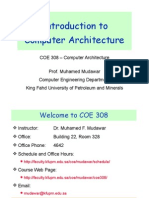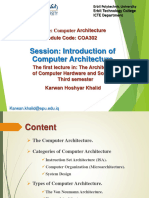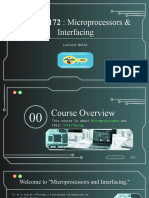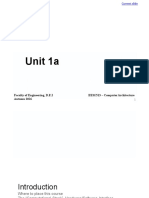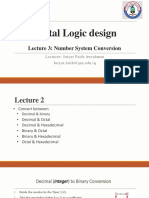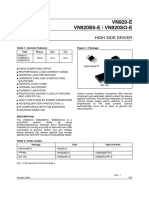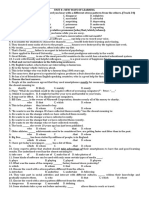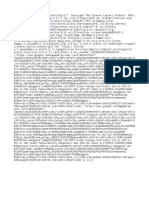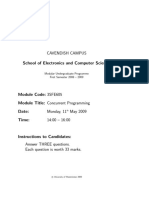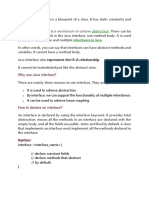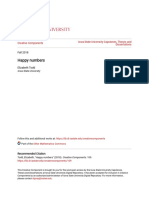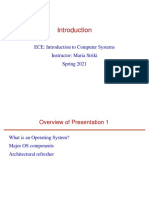0% found this document useful (0 votes)
9 views12 pagesCA-Lec2-Introduction To Computer Architecture
The lecture on Computer Architecture introduces key concepts including the definition, key components like CPU and memory, and the distinction between computer architecture and organization. It covers the Von Neumann architecture, modern enhancements such as pipelining and multi-core processors, and the Instruction Set Architecture (ISA). Understanding these concepts is essential for optimizing software performance and system design.
Uploaded by
Aeub omerCopyright
© © All Rights Reserved
We take content rights seriously. If you suspect this is your content, claim it here.
Available Formats
Download as PDF, TXT or read online on Scribd
0% found this document useful (0 votes)
9 views12 pagesCA-Lec2-Introduction To Computer Architecture
The lecture on Computer Architecture introduces key concepts including the definition, key components like CPU and memory, and the distinction between computer architecture and organization. It covers the Von Neumann architecture, modern enhancements such as pipelining and multi-core processors, and the Instruction Set Architecture (ISA). Understanding these concepts is essential for optimizing software performance and system design.
Uploaded by
Aeub omerCopyright
© © All Rights Reserved
We take content rights seriously. If you suspect this is your content, claim it here.
Available Formats
Download as PDF, TXT or read online on Scribd
/ 12



